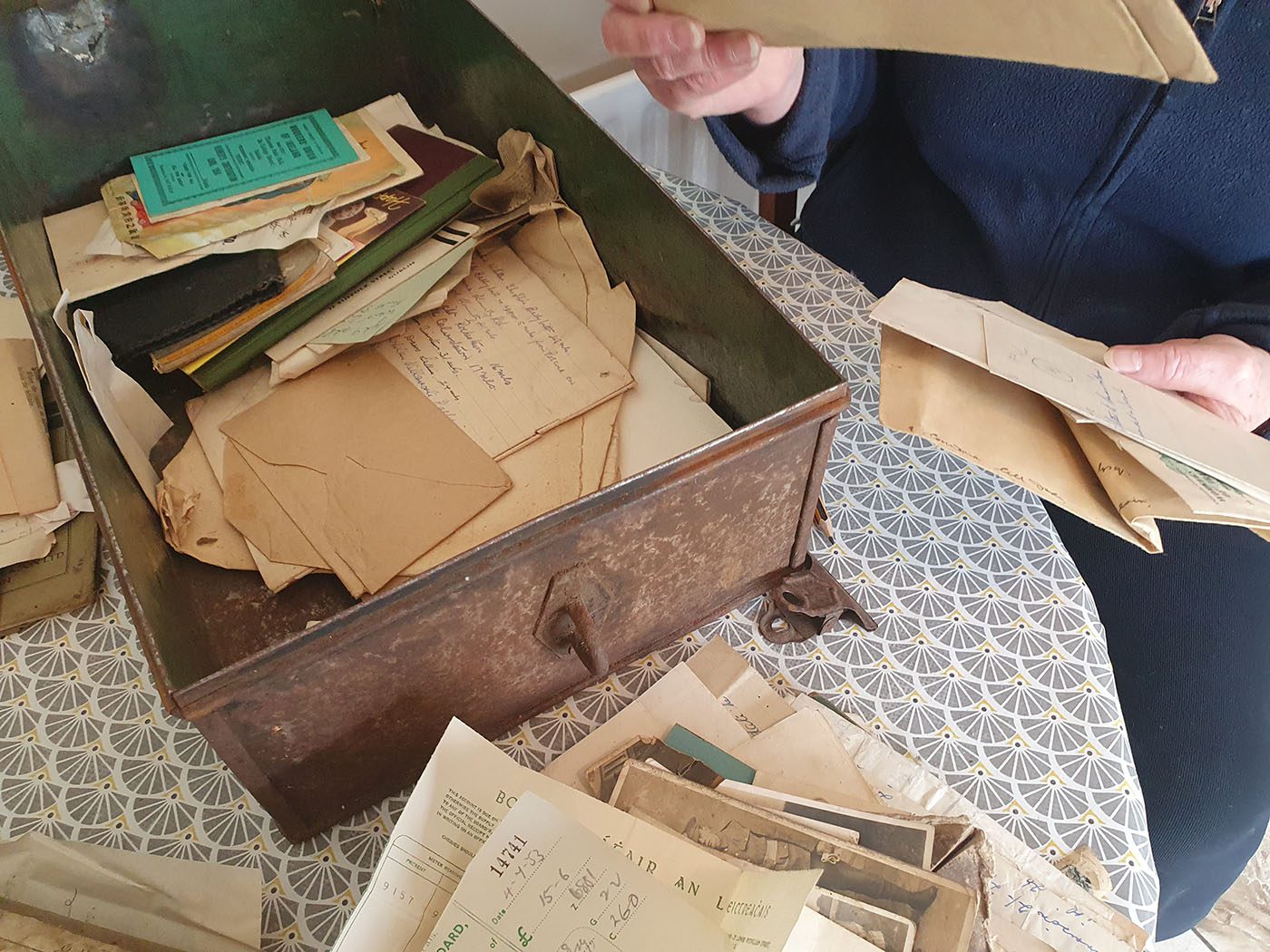Ag Fanacht (Waiting) is the exhibition of the project War Widows by Angelina Foster, funded by the Kildare Decade of Commemorations. Please see the details at the end of this page for the exhibition venue & catalogue.
The women were always waiting, waiting for news of their loved ones, waiting for the pension, waiting for the vote, for equality. In July 2022, I travelled to France and visited 6 World War One cemeteries and the destroyed villages of Verdun. This work was created on reflection of the experiences, survival and cultural silence around Irish women and families of WW1 soldiers buried in Europe, the ones who never came home.
Wars tear families apart, but the deaths of Irish soldiers in World War One were different. As the war in Europe raged on, and the battle for Irish independence built up momentum, men made different choices about when and where to fight, and those choices built a wall of cultural silence for many families of Irish soldiers in post-war New Ireland, some felt shame or were seen as traitors for taking the King’s penny and supporting Ireland’s oppressor.

Re-united in death
Visit the Passlands Graveyard in Monasterevin, Co Kildare, and you’ll find the graves of two brothers – Sylvester and John Sheppard – lying side by side. Sylvester lost his life in the 1916 Rising, while John died as a result of wounds received at the end of the Great War.
About 210,000 Irishmen served in the British forces during World War One and they decided to participate for many different reasons, not always shared by their families.
The Impact on Women
The Ireland that WWI soldiers left, from 1914 onward, was very different from the one their mothers, sisters, girlfriends and wives found themselves in by the end of the war. Many were left as single mothers with few supports and received little empathy or compassion for their terrible loss. Many of these women did not have a body to bury in Irish soil. Every community in Ireland has a burial ground, and the funeral has always had a huge role in Irish culture. But the families of soldiers buried in Europe never got to attend their loved ones’ funerals and their deaths were often not spoken of within their communities, so their stories were lost, and many grieving women were never able to visit the graves of those they mourned.
Ireland’s Decade of Centenaries
In Ireland, we are concluding a decade of anniversaries that mark the extraordinary moments in the country’s history that occurred from 1912 to 1922.
The national Decade of Centenaries has been harnessed as an opportunity to reflect on Ireland’s different traditions and the everyday experience of ordinary people living in extraordinary times, as well as on the leaders and key actors in historic events.
As our Decade of Commemoration comes to a close, our communities and national consciousness are processing empathic understandings of our past versus the impacts of colonialism imperialism and identity during this period and beyond.
Uncovering Untold stories
My cousin Jack Foster is buried in St Sever Extension – a WW1 cemetery in Rouen, France – and his grave unlocks another kind of story about the women who grieved the WW1’s Irish soldiers.
Jack had been born outside wedlock, as a result of which his mother Brigid was removed from the family home. I discovered her story a few years ago, and finding connections to other women like her through the graveyards inspired me to learn more about women like her who ended up in workhouses, survived as widows or single parents, or encouraged their children to serve in the Great War for reasons including the need to secure income for their families.
The War Widows project will create a body of work inspired by the experiences – during and after the war – of the widows, mothers, and other loved ones Kildare soldiers left behind. It will also explore and illustrate the experience of the families of soldiers buried in France – the ones who never came home.

Exhibition dates and catalogue
Ag Fanacht is currently exhibiting in Athy Library, Co Kildare, Ireland and has been extended until the 4th of November 2023.
Please see Ag Fanacht Exhibition catalogue for the link to the exhibition catalogue, I hope to have pieces for sale in my shop shortly.
If you have a story, no matter how small, about the experiences of women or your families’ links in World War One, please click on the link below to use the form below to send it to me. Whilst Ag Fanacht explores mostly from a Kildare perspective I am looking for funding to research other aspects.
Project: War Widows and the Experiences of Women during & after World War One
Funders: This project is being funded by the Kildare County Council Decade of Commemorations Committee’ and the ‘Department of Tourism, Culture, Arts, Gaeltacht, Sport and Media under the Decade of Centenaries 2012-23 initiative

